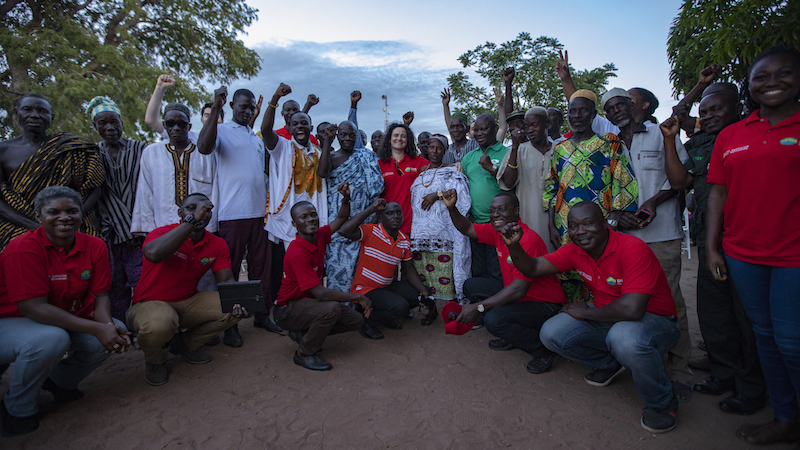Imagine having decisions made on your behalf, decisions that impact your livelihood, your home, your culture – and not having a voice in the process.
Throughout their long histories, Indigenous Peoples have often been left out of crucial decisions that determine the fate of the natural resources on which their ancestral lands reside, rendering their incomes and overall livelihoods particularly vulnerable to the impacts of deforestation. Taking a notable step to engage key stakeholders in the global dialogue on climate change, in 2016 the Paris Climate Agreement stressed the importance of Indigenous voices and perspectives in finding solutions to climate change.
The Climate Investment Funds (CIF) also recognized this when it was established in 2008, creating an innovative mechanism to directly empower Indigenous Peoples and Local Communities (IPLCs) in these efforts. A core focus of CIF is accelerating climate action through strategic forest sector investments that contribute to economic and social development, and enhanced ecosystems. The Forest Investment Program (FIP) was created to provide direct investments to address the drivers of deforestation and forest degradation, through grants and low-interest loans.
Unique to the FIP is an innovative Dedicated Grant Mechanism (DGM), designed and governed by Indigenous Peoples and Local Communities themselves, empowering these forest-dependent communities to set priorities, design projects and implement community-led projects aimed at managing their natural environment. Through the DGM, sustainable forest-use practices led by IPLCs are supported, shared, and elevated to the global policy arena. This gives some of the people most directly impacted by climate change a voice on REDD+, a global process with the objective of mitigating climate change through country efforts to reduce greenhouse gas emissions from deforestation and forest degradation, as well as promote sustainable forest management and forest carbon stocks.
Given the potential for the DGM to have long-lasting and wide-reaching impacts, CIF commissioned a learning review to understand lessons from its design and early implementation, and inform how the DGM could be further scaled or replicated in the context of CIF and other initiatives. The independent learning review was the first, systematic attempt to document the early lessons from this ground-breaking approach. The review found that the DGM is resulting in sub-projects that better met community needs, have better inclusion of marginalized groups, helped deliver outcomes more efficiently and had better constituent representation, among other outcomes.
One outcome is improved land rights. A historically contentious issue, better land rights for IPLCs presents a clear path for them to better manage forests. An estimated 65% of the world’s land is under Indigenous customary ownership, yet Indigenous claims to land are often undermined by local and national governments. According to the World Resources Institute, when Indigenous land rights are recognized, there is strong evidence that the rate of deforestation goes down, which means the forests continue locking in carbon. The DGM has already enabled IPLC organizations to achieve greater recognition for their land rights: through sub-projects funded by the DGM, recognition for 133 communities’ claims to approximately 400,000ha of ancestral land was secured in Peru. This achievement creates a stronger legal position for communities to protect their land against encroachment by mining companies or other actors, and also increases their overall influence at a local and global level. Notably, the review states that the DGM model is reaching scale in this area efficiently and effectively relative to other similar initiatives.
By design, the DGM relies on the contributions, commitment and ancestral knowledge of Indigenous Peoples in its governance structure. Local representatives serve on a national decision-making body (called the National Steering Committee) for each national DGM project, and a designated National Executing Agency manages the fiduciary operations of the project. By involving IPLCs at all levels, the people most impacted in forest management decisions are at the table:
“[The DGM is] much more than a temporary and experimental project. …It has sufficient legitimacy, relevance, efficiency, social sustainability to continue. It is a national Indigenous climate mechanism, which must be legalized, strengthened as a permanent structure. It is an Indigenous mechanism for Indigenous targeting of global climate funds in Peru”–AIDESEP, CONAP, WWF-Peru presentation
Beyond these important tangible benefits, the learning review highlighted that trust, ownership and transparency were essential contributing factors to the success of the DGM. It is an old adage that trust is earned, not given – in this case it was about making a commitment to Indigenous Peoples and building trust gradually through fair and transparent processes through which local-level projects, designed by community members, were approved. Importantly, Indigenous Peoples are involved in each step of the process, including in the overall design and governance at the global and national levels. This enhanced trust also improved and deepened relationship between Indigenous Peoples and the World Bank, and even between IPLC organizations. The DGM serves as a prime example for how governments, IPLCs and international organizations cooperate and work together to deliver climate goals, enabling changes that go well beyond project-level impacts.
Through its innovative design, the DGM has already provided a platform for IPLCs to engage more powerfully on issues that impact their livelihood, such as land rights. But the DGM has the potential to be more than a stand-alone mechanism: its early successes pave the way through which governments, donors and others can bolster the efforts that Indigenous organizations are already making to scale-up and potentially replicate the DGM for even more transformational impact going forward. One lesson is certain: when Indigenous and local voices play a greater role in forest management, the future of our forests is brighter.
This post is sponsored by the Climate Investment Funds. See our editorial guidelines for what this means.
